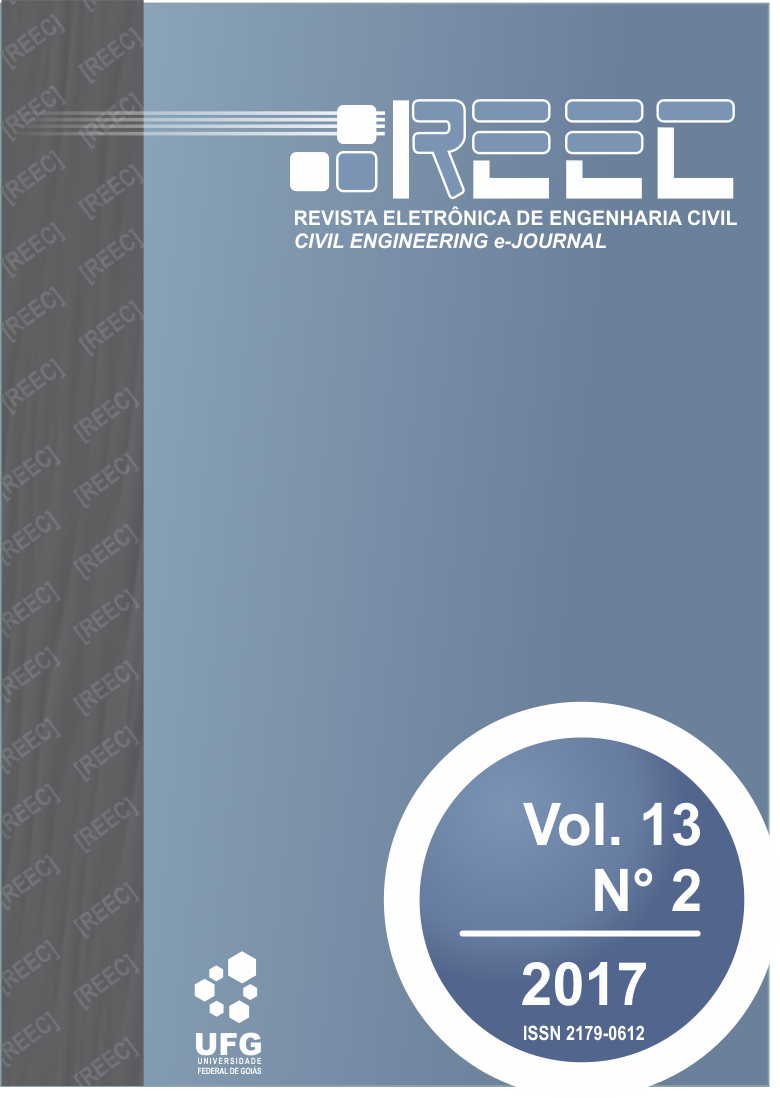DESEMPENHO TÉRMICO DE UMA EDIFICAÇÃO UNIFAMILIAR NATURALMENTE VENTILADA PARA O CLIMA DE TEÓFILO OTONI-MG
DOI:
https://doi.org/10.5216/reec.v13i2.42940Resumo
RESUMO: Nos últimos anos, em virtude das preocupações com a eficiência energética das edificações, a adequação da arquitetura ao clima ganhou maior importância. Sendo que, uma das formas de tornar uma construção eficiente energeticamente, é através da utilização de estratégias de condicionamento passivo, destacando-se a ventilação natural para o clima quente e úmido. Neste contexto, o presente trabalho apresenta a simulação computacional de uma edificação unifamiliar, naturalmente ventilada, realizada por meio do plug-in Archsim, para a cidade de Teófilo Otoni – MG, utilizando-se, para tanto, os dados climáticos do TRY (Test Reference Year). As alternativas adotadas nas simulações consistiram em variar a disposição e a área de ventilação das aberturas, verificando a influência destes parâmetros no desempenho térmico da edificação. De acordo com os resultados obtidos na simulação pode-se dizer que a melhor orientação para as aberturas é na direção leste-sul com área de abertura para ventilação natural de 20% da área do piso. Para esta composição a porcentagem de horas de conforto para a edificação é de 57,5% e o desconforto térmico anual é de 42,5% das horas. A principal contribuição deste artigo consiste na análise da utilização da ventilação natural em edificações de pequeno porte e seu impacto no conforto térmico do usuário, apresentando ainda a importância da utilização de simulações computacionais como ferramenta de auxilio no projeto arquitetônico. ABSTRACT: Concerns related to energy efficiency in buildings in recent years, induced the increase of architectural adaptation to climate. The use of passive conditioning strategies, emphasizing natural ventilation for hot and humid climate is one way to have an energy-efficient construction. In this context, this paper presents a computer simulation of a single family building, naturally ventilated, held by the plug-in Archsim to the city of Teófilo Otoni - MG, using the climate data TRY (Test Reference Year). The alternative adopted in the simulations consisted in varying the layout and area of ventilation openings, checking the influence of these parameters on the thermal performance of the building. According to the results obtained in the simulation, the best orientation for the openings is in the south-east direction with opening area for natural ventilation of 20% of the floor area. For this composition the building comfort hours’ percentage is 57.5% and the annual thermal discomfort is 42.5% of the hours. The main contribution of this paper is the analysis of the use of natural ventilation in small buildings and its impact on the thermal comfort of the user, showing the importance of using computer simulations as an aid tool in architectural design.Downloads
Não há dados estatísticos.
Downloads
Publicado
2017-04-15
Como Citar
OLIVEIRA, Camila Cordeiro de; SAKIYAMA, Nayara Rodrigues Marques; MIRANDA, Layane Ventura de. DESEMPENHO TÉRMICO DE UMA EDIFICAÇÃO UNIFAMILIAR NATURALMENTE VENTILADA PARA O CLIMA DE TEÓFILO OTONI-MG. REEC - Revista Eletrônica de Engenharia Civil, Goiânia, v. 13, n. 2, 2017. DOI: 10.5216/reec.v13i2.42940. Disponível em: https://revistas.ufg.br/reec/article/view/42940. Acesso em: 27 dez. 2025.
Edição
Seção
Arquitetura e Construção
Licença
Autores que publicam nesta revista concordam com os seguintes termos: Autores mantém os direitos autorais e concedem à revista o direito de primeira publicação, com o trabalho simultaneamente licenciado sob a Licença Creative Commons Attribution que permite o compartilhamento do trabalho com reconhecimento da autoria e publicação inicial nesta revista.
![[REEC] Revista Eletrônica de Engenharia Civil](https://revistas.ufg.br/public/journals/30/pageHeaderLogoImage_pt_BR.png)



